I love almost all types of fish and seafood, but if I were to pick a favorite, it’s gotta be salmon. I love that it tastes delicious any way I prepare it it pairs well with so many different flavors and sides.
Gram-worthy plates and yummy taste aside, it also checks all the nutrition boxes for me. This high-quality protein is brimming with omega-3s and important B vitamins. This collection of 15 best salmon recipes is easy for beginners, satisfying for pros, and also brings the wow factor.
Sheet Pan Baked Salmon with Vegetables
When I’m short on time and dinner ideas, this baked salmon recipe is my go-to. It’s fast, balanced, and delicious! I love it because it uses one of my favorite convenient kitchen tools of all time: the baking sheet. This simple skin on salmon dinner recipe is a great one to start with, especially for someone new to cooking salmon.
Dairy Free | Egg Free | Gluten Free | Grain Free | Nut Free | Whole 30
Air Fryer Salmon Bites
I’m always thankful that my kids love salmon as much as I do. And one of their favorite ways to eat it is this quick method for making air fryer salmon bites. I’m always glad when they request it because it’s one of the fastest weeknight dinners out there, and I love rounding out the meal by serving it bowl style over rice and with a side of quick pickled cucumbers.
Dairy Free | Gluten Free | Grain Free | Nut Free
Miso-Glazed Salmon
I think miso paste is one of the most underrated condiments out there. It adds so much delicious flavor to foods and I find myself dreaming about ways to use it: in salad dressing, over roasted veggies, and as the perfect flavor for this simple miso glazed salmon recipe.
Dairy Free | Egg Free | Gluten Free | Nut Free | Paleo
Salmon Caesar Salad Grain Bowls
It’s no secret that I love caesar salad, so then it’s probably not a surprise that I especially love this updated caesar salad grain bowl. I top bowls of crispy fresh romaine with flaky salmon, shaved Parmesan, tender grains, sliced radishes, crispy chickpeas, and Caesar dressing. It’s such a satisfying and nutritious weeknight dinner, and I like to reheat the leftovers for lunches I look forward to.
Dairy Free | Gluten Free | Nut Free
My Easy 5-Minute Salmon Salad
I know it sounds too good to be true, but all that’s required of this delicious and satisfying recipe is 5 minutes and 5 ingredients to make this flavorful and satisfying salmon salad. I call for canned salmon, but it can also be made with leftover baked, sauteed, or grilled flaked salmon. Serve it as a sandwich, lettuce wrap, with cucumber slices for dipping, or as a salad.
Dairy Free | Egg Free | Gluten Free | Grain Free | Nut Free | Paleo | Whole 30
Teriyaki Salmon Bowls
I make this salmon recipe more than any other one on this website. It’s nourishing, ultra flavorful, and is ready to eat in just 30 minutes. With glazed salmon, rice, avocado, and fresh vegetables, these salmon bowls are a nutrient-rich meal that works well for busy nights or in meal prep. I also love that this recipe is flexible, allowing for the addition of more vegetables and the substitution of cauliflower rice for a grain-free option.
Dairy Free | Egg Free | Gluten Free | Nut Free
Salmon Burgers
These simple salmon burgers are a delicious and quick way to get more healthy fats into my family’s meals. And even though it’s an easy recipe, I love that these burgers are anything but ordinary when topped with a delicious creamy avocado sauce. I include directions for making it on the stovetop or in the air fryer.
Dairy Free | Gluten Free | Grain Free | Paleo | Whole 30
Grilled Salmon Kabobs
If you’re intimate by grilling fish, these salmon kebabs are genius, delicious, and fail-proof. The salmon skin-on pieces get marinated in a blend of lemon juice, avocado oil, honey, and seasonings before being skewered with lemon slices. And don’t skip that step, because marinating takes the flavor to another level, and the citrus makes the salmon more tender. I especially love these tender kabobs paired with a curry yogurt sauce that can be made make ahead of time.
Egg Free | Gluten Free | Nut Free | Grain Free
Mediterranean Salmon Bowls
Dinner bowls are the way to go when I need a meal that’s fast, nourishing, and everyone will happily eat. In this salmon bowl recipe, quinoa gets topped with lemon-herb marinated salmon filets, chickpea salad, crisp greens, feta cheese, kalamata olives, and an easy homemade Tzatziki sauce. I especially appreciate that this nutritionally balanced meal is perfect for meal prep.
Dairy Free | Egg Free | Gluten Free | Nut Free
Sheet Pan Honey Glazed Salmon with Asparagus
This recipe is a family favorite in my home because it delivers that excellent sweet and savory combo. By glazing the salmon, skin side down, with honey and baking it alongside asparagus on a single sheet, I can serve up a high-protein main course plus side dish that’s ready in less than 25 minutes. The honey-glazed salmon also stores well, so it can be added to salads and meals all week long.
Dairy Free | Egg Free | Gluten Free | Nut Free
Grilled Salmon with Elote-Style Veggies
A perfect mix of two popular cuisines, this recipe is a delicious combination of Mexican meets Mediterranean. Personally, I think this match-up is the most delicious way to fill plates with a meal that delivers protein, veggies, fiber, antioxidants, and so many vitamins and minerals all at once.
Egg Free | Gluten Free | Grain Free | Nut Free
Raspberry Balsamic Glazed Salmon
This elegant-yet-easy salmon calls for basic ingredients and has a raspberry glaze that provides the perfect complement to rich salmon. It’s made even more beautiful because the whole thing can be on your table in less than 30 minutes. I’ve included directions to make this impressive, healthy dinner in the oven or on the grill.
Dairy Free | Egg Free | Gluten Free | Grain Free | Paleo | Whole 30
Easy One-Skillet Creamy Tuscan Salmon
This salmon recipe is one of my favorites to serve when my parents are in town or I just want the cozy comforts of a recipe inspired by the Tuscan countryside. This healthy salmon dish uses spinach, artichokes, sun-dried tomatoes, garlic, and basil in the creamy Italian sauce. It’s ready to eat in just 25 minutes, which means I’m saying ‘mangia’ in no time.
Egg Free | Gluten Free | Nut Free | Grain Free
Air Fryer Salmon
Salmon is one of my favorite protein foods, so when I discovered that all three of my kids would happily eat it up, this mama and dietitian was so happy. When I need a healthy protein to add to our plates, this air fryer salmon is a simple winning weeknight entree and quick-cooking method that I use so often. I keep it simple by pairing the salmon fillets with sautéed broccolini and Instant Pot brown rice.
Dairy Free | Egg Free | Gluten Free | Grain Free | Nut Free | Whole 30
Sheet Pan Honey Mustard Salmon
On busy weeknights, this easy salmon recipe is one of my favorite meals to prepare. With minimal prep time, it’s ready to eat in a total time of about 30 minutes, and my kids go crazy for the sweet, tangy flavors. They gobble up every last bite … even including the broccoli!
Egg Free | Dairy Free | Gluten Free | Nut Free
Health Benefits
It’s hard to think of salmon without using the word ‘superfood.’ I don’t like using that label very often, but I have to make an exception when it comes to sustainably-raised, wild-caught fresh salmon. Salmon is a great choice because it’s
- Nutrient-dense. Salmon is rich in protein, full of vitamin A, D, and B vitamins, as well as minerals like magnesium, potassium, and selenium. It’s a high protein food that’s low in carbohydrates and saturated fat so it can be paired with a variety of foods to meet nutritional needs.
- Versatile. The slightly sweet flavor and firm texture make salmon adaptable to so many flavors. It can be used with a marinade or simply seasoned for dishes like salmon pasta to salmon tacos and more.
- Easy to home cook. Recipes for salmon range from smoked salmon, roasted salmon, and grilled salmon, to stove top salmon and even air fryer salmon because it is so easy to cook.
Cooking Tips
Cooking salmon properly enhances its flavor and preserves its nutritional value, making meals that are both tasty and healthy.
- Before cooking, take the salmon out of the refrigerator and let it sit at room temperature for about 15 minutes. This helps ensure the salmon cooks evenly.
- Salmon has a wonderful natural flavor that shines through when simply seasoned. No need to make a garlic butter sauce — sometimes, a touch of salt, black pepper, and perhaps a squeeze of lemon are all that’s needed.
- No matter which cooking method is being used, it’s important to preheat. A hot cooking surface sears the filet quickly, ensuring a crispy exterior while keeping the inside tender and juicy.
- Check for doneness. Salmon should be cooked to an internal temperature of 145°F (62.8°C). To check, insert a thermometer into the thickest part of the filet. Alternatively, you can check by gently pressing down on the top of the fish with a fork. If the layers of the salmon flake apart easily and the inside looks slightly translucent, it’s done.
Choosing Sustainable Salmon
As a dietitian, I aim to make the best choices when it comes to food and what I put in my body. Buying sustainable salmon helps protect the fish population, the oceans, and the communities that rely on them.
Here are some tips for choosing the best salmon:
- It’s okay to try some farm-raised varieties. Wild-caught salmon, particularly from Alaska, is more sustainable because Alaskan salmon fisheries are well-managed and have stringent regulations. However, not all farmed salmon is bad. Look for farmed salmon from operations that use responsible farming practices, such as land-based closed containment systems or offshore deepwater net pens that have less environmental impact.
- Look for sustainability certifications on the packaging. The Marine Stewardship Council (MSC) certification ensures the fishery has met rigorous sustainability standards. The Aquaculture Stewardship Council (ASC) and Global Aquaculture Alliance (GAA) Best Aquaculture Practices (BAP) certification are good indicators of responsibly farmed salmon.
- Pay attention to the country of origin. Wild salmon from Alaska is almost always a good choice. And Norway also has strict regulations for its fish farms, making it a more reliable choice for farmed salmon. Chile and Canada’s farmed salmon, on the other hand, have been criticized for their environmental impact.
- Avoid endangered salmon species. Some species of salmon are more threatened than others. For example, Atlantic salmon is critically endangered in the wild, which is why almost all Atlantic salmon available are farmed. Get up-to-date recommendations from resources like the Monterey Bay Aquarium’s Seafood Watch.
Frequently Asked Questions
This totally depends on the recipe being made and your comfort level. Pan frying is beneficial because you can see the salmon cooking, which means there’s less risk of it being overcooked. But pan seared salmon can be slightly finicky if you’re not comfortable controlling the heat of the skillet you’re using, don’t have a reliable skillet, or the salmon is a lot of different thicknesses. Baking is an almost fail-proof method for someone cooking salmon for the first time, and broiling is a close second. These quick cook time methods are easy and almost always yield a nice flaky, moist, and yummy meal. Watch the salmon even more closely if you choose to broil it.
A good rule of thumb is to cook salmon for 4-6 minutes per half-inch of thickness. If you’re unsure, it’s better to slightly undercook salmon, as it will continue to cook a bit more from the residual heat after you remove it from the heat source.
Pair salmon with pretty much anything that will compliment your flavor profile. Some popular side dishes for salmon are greens and salads, veggies like sauteed asparagus and roasted green beans, cooked quinoa or cooked rice, and roasted potatoes or Parmesan crusted potatoes.
Salmon pairs well with sweet-savory combinations like honey dijon, maple garlic, and ginger soy sauce. It’s also great with citrus flavors, such as lemon capers and orange garlic salmon, and simple marinades made from lemon juice, olive oil, and fresh herbs, such as rosemary, cilantro, parsley, and thyme.
For ultimate success, we highly recommend reading the tips in the full blog post above. All photos and content are copyright protected. Please do not use our photos without prior written permission. If you wish to republish a recipe, please rewrite the recipe in your own unique words. Link back to the source recipe here on The Real Food Dietitians. Thank you!
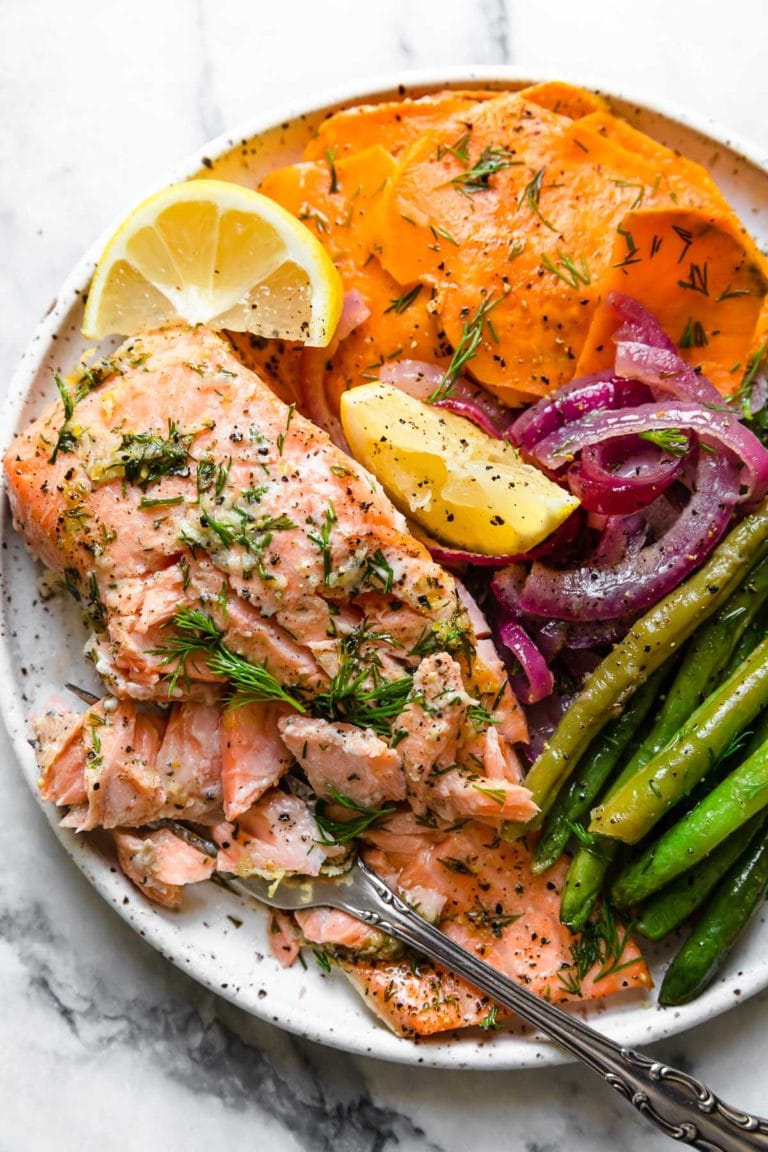
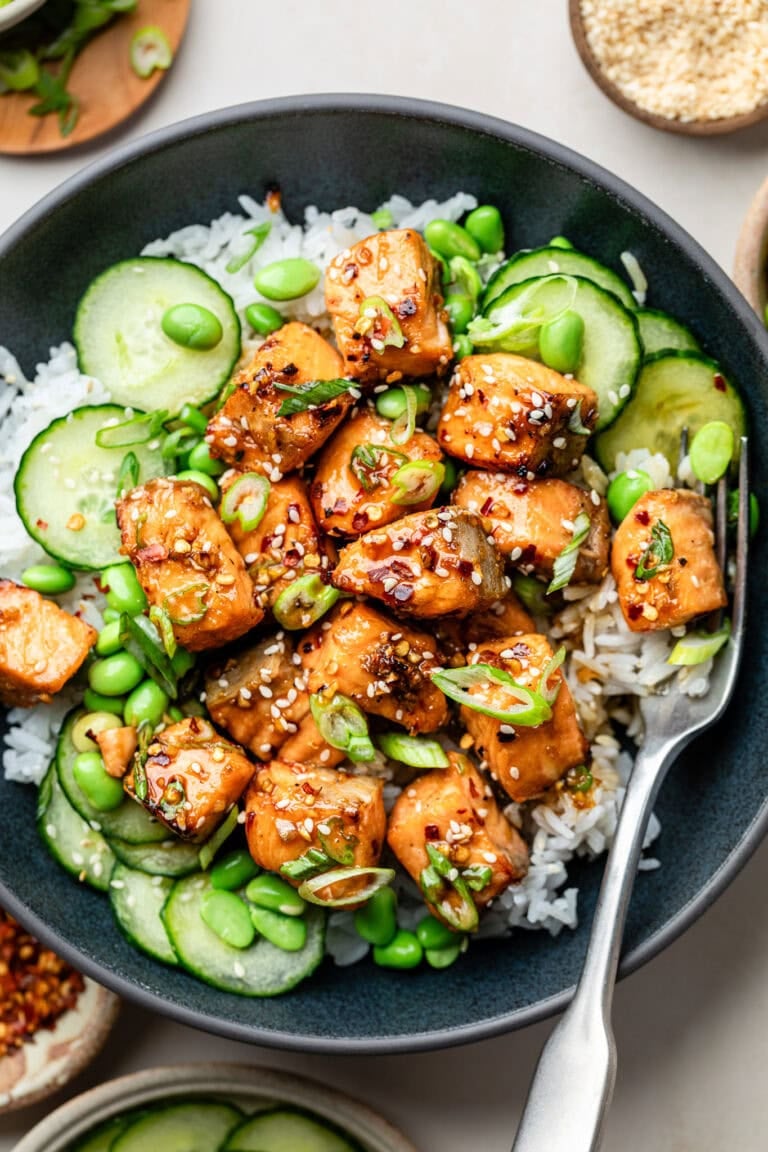
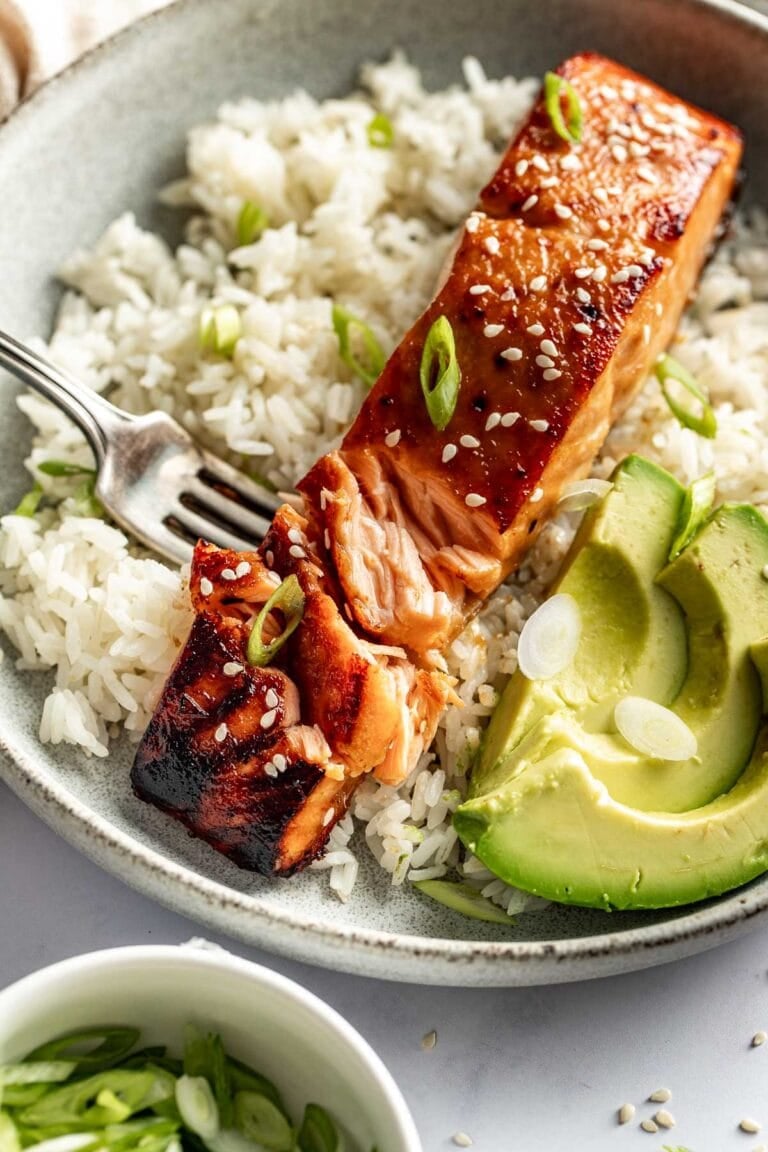
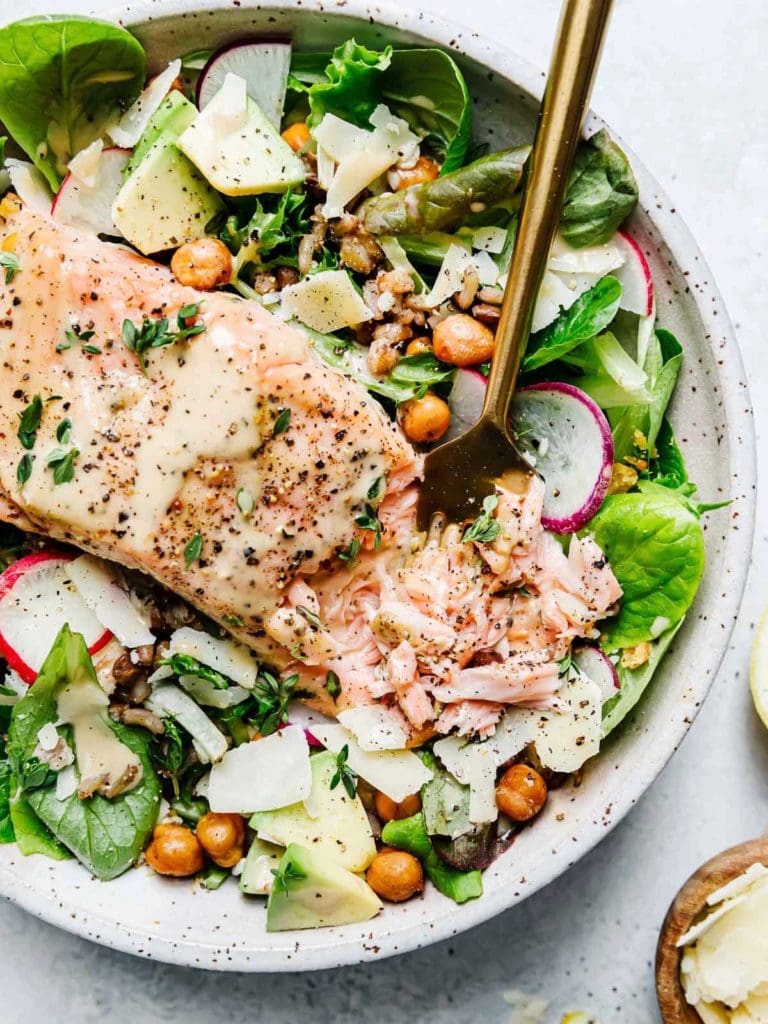
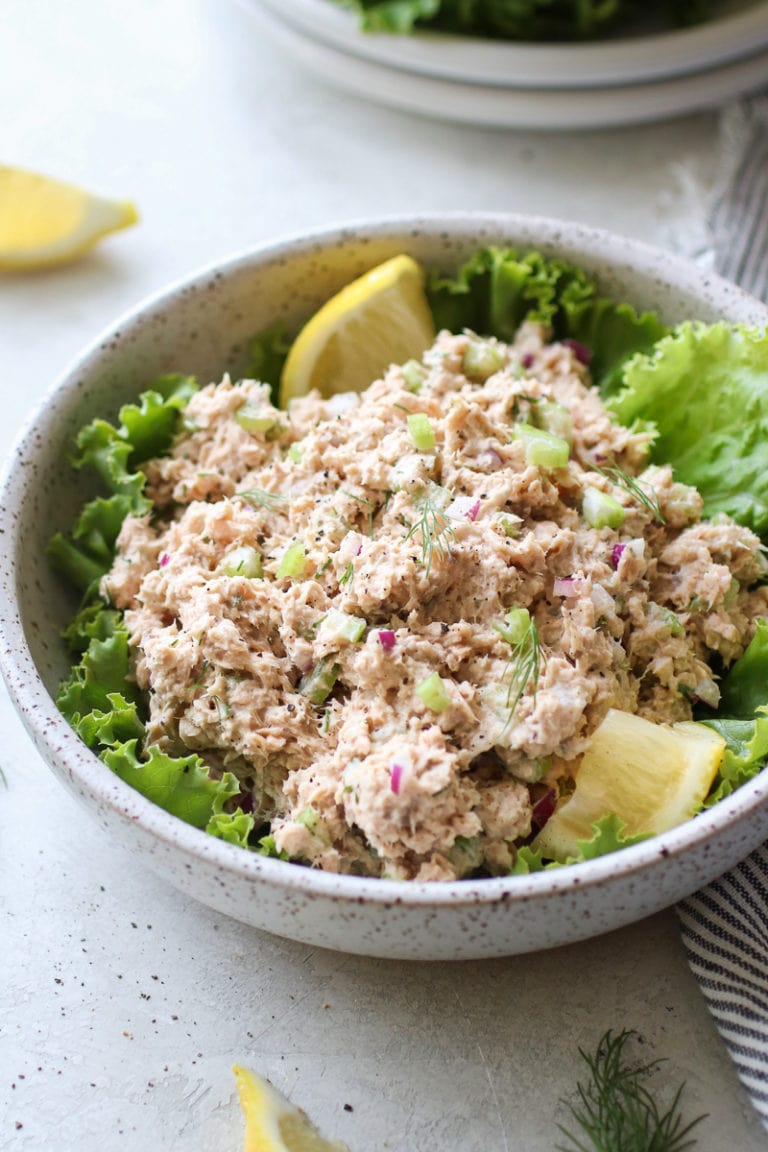
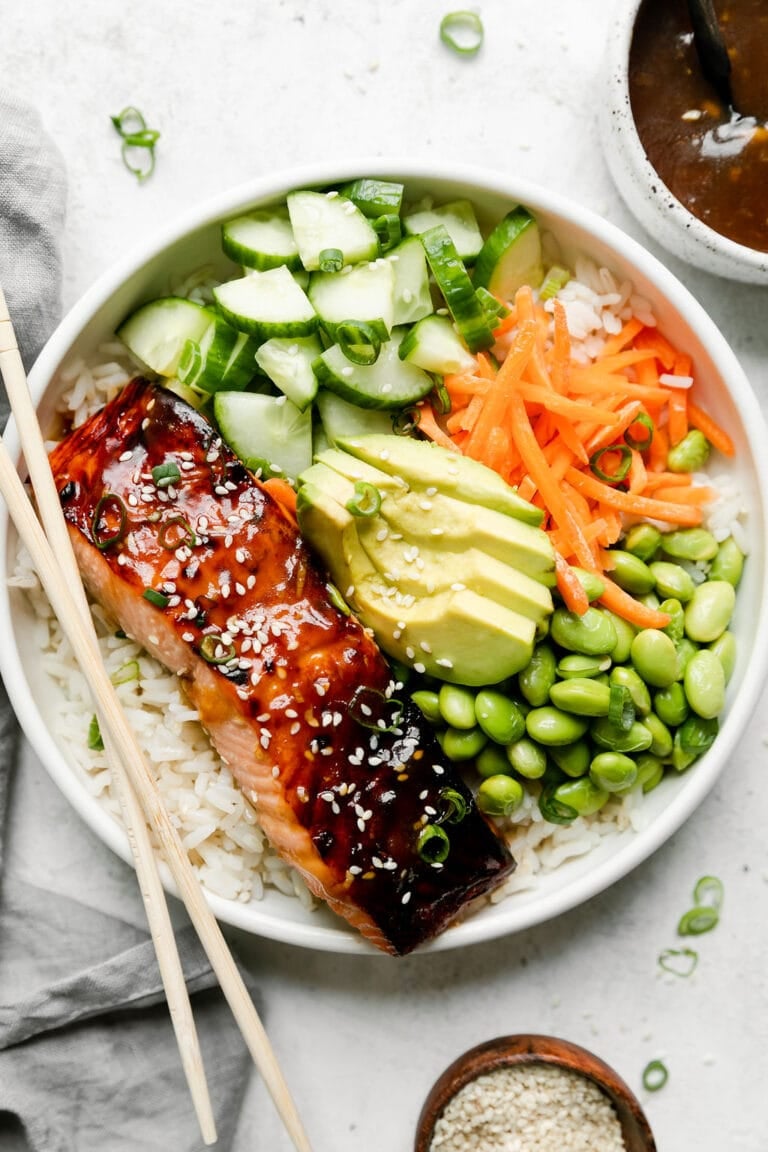
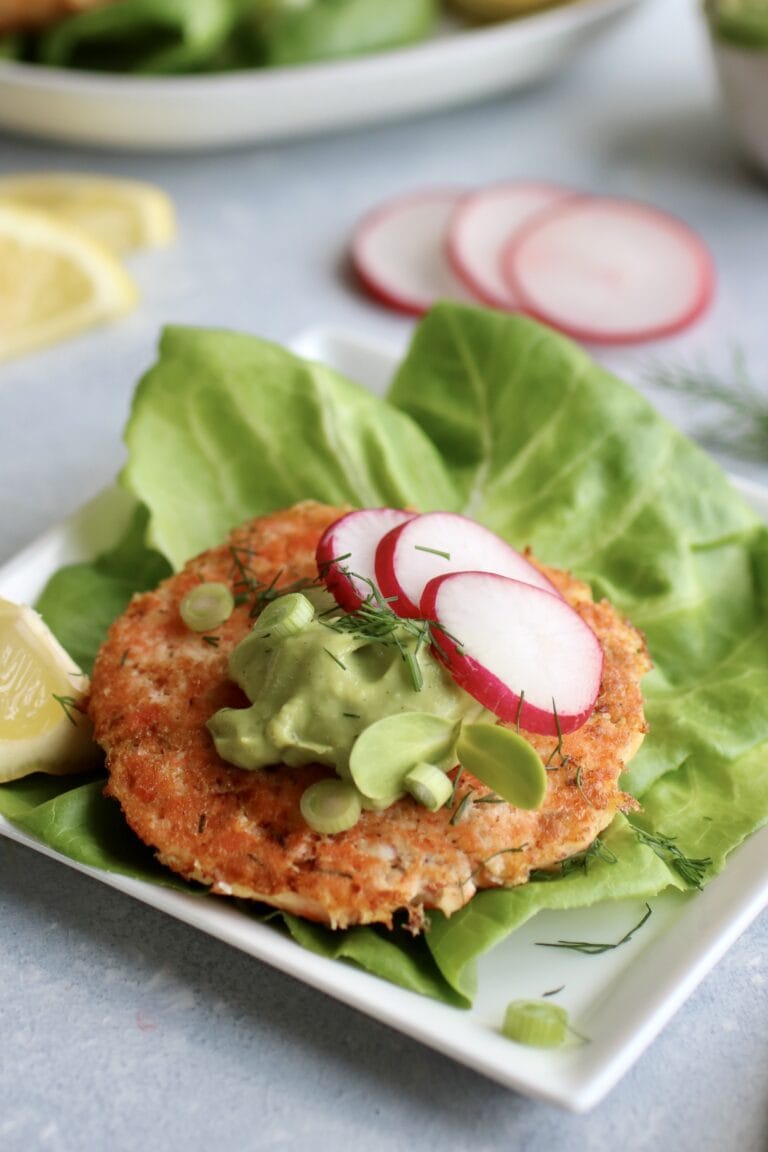
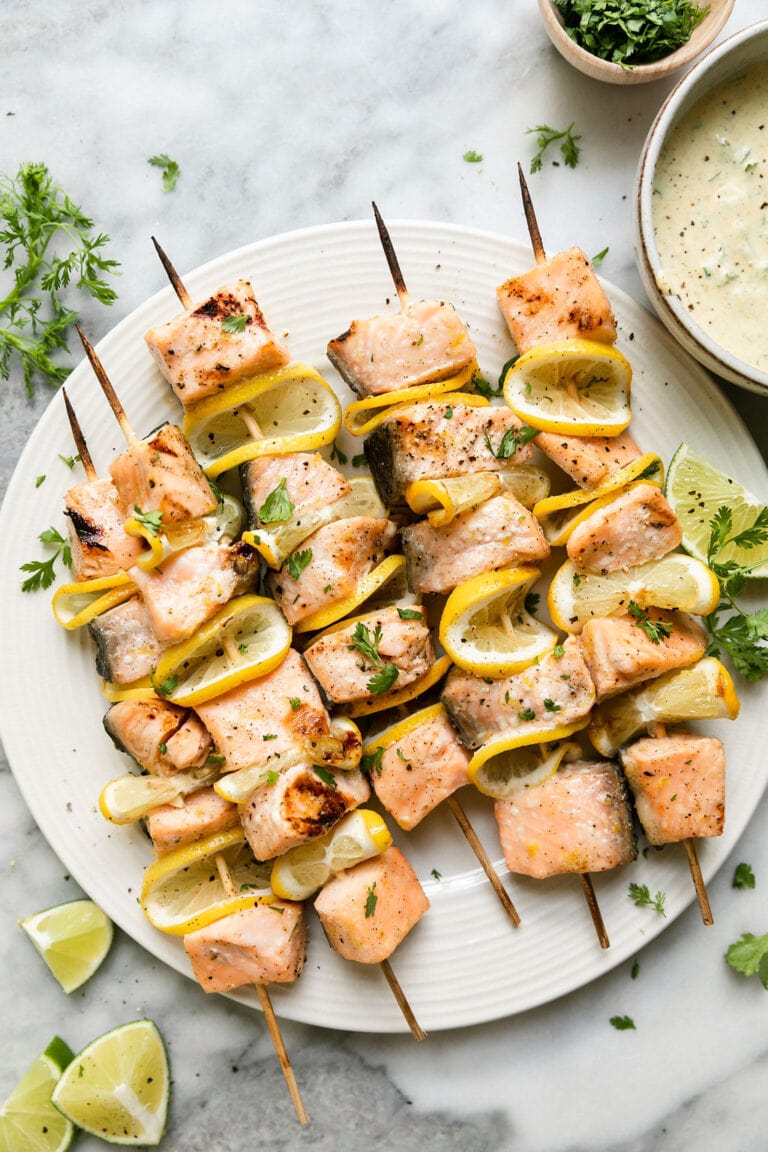
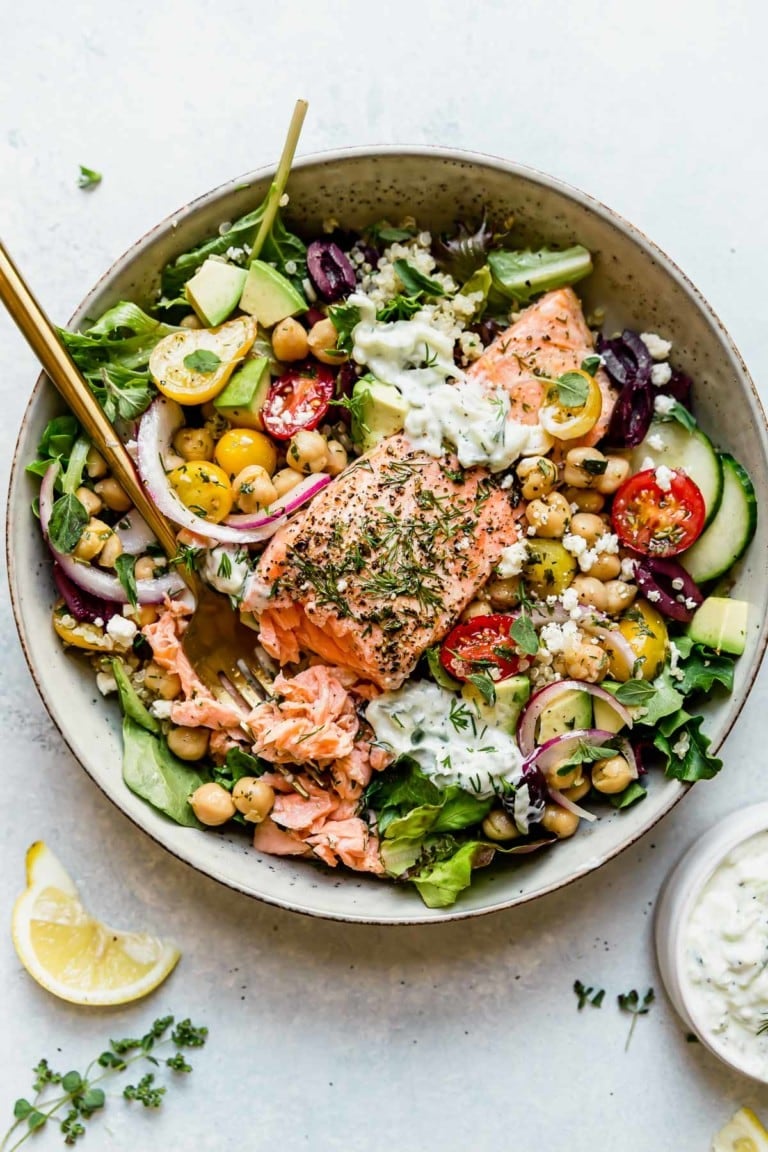
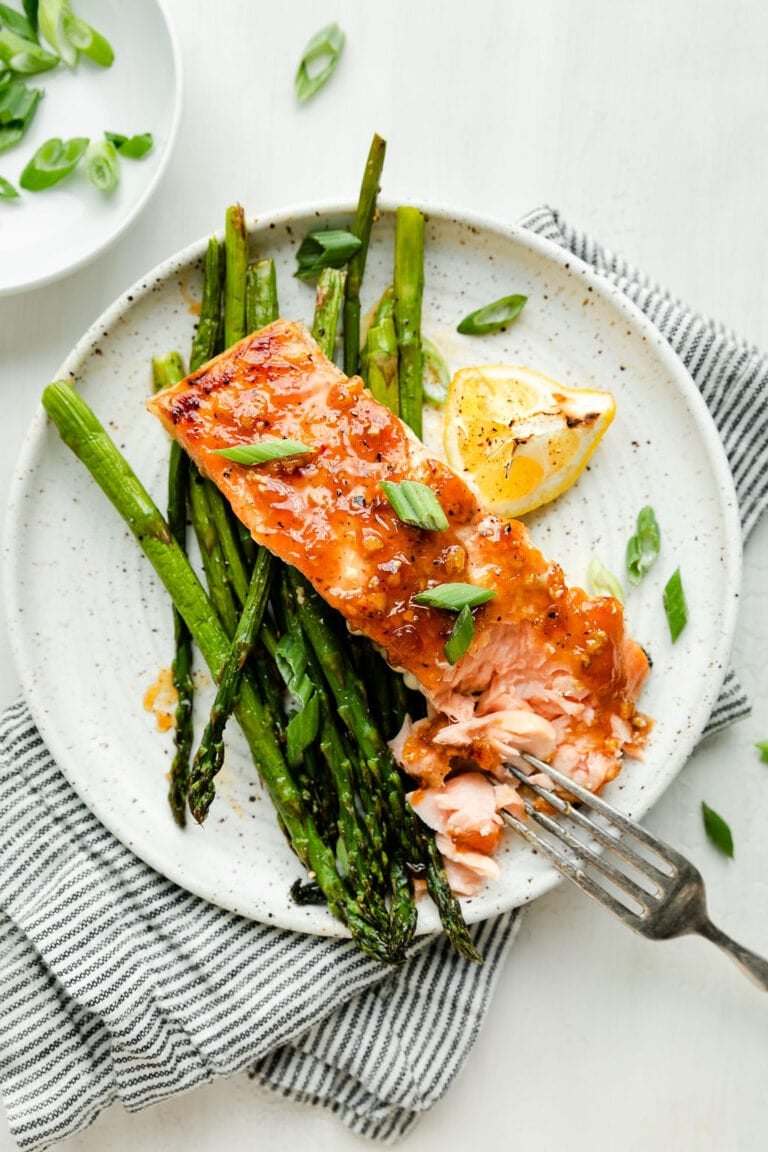
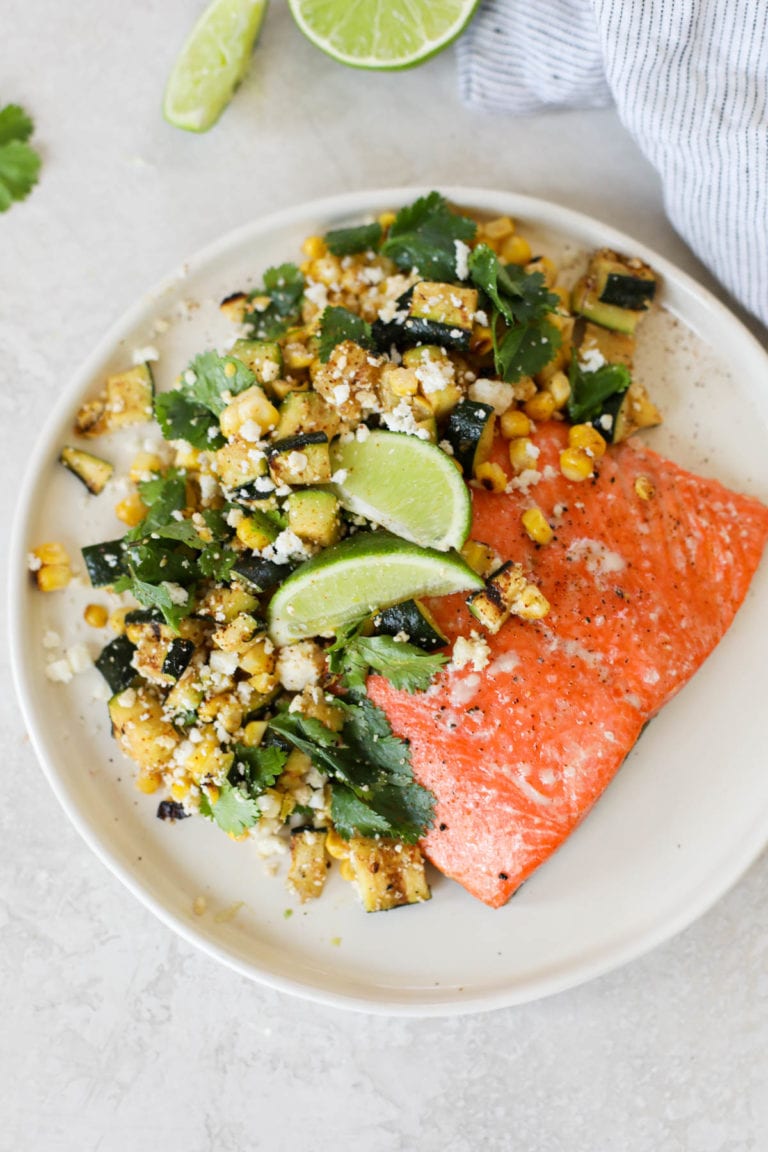
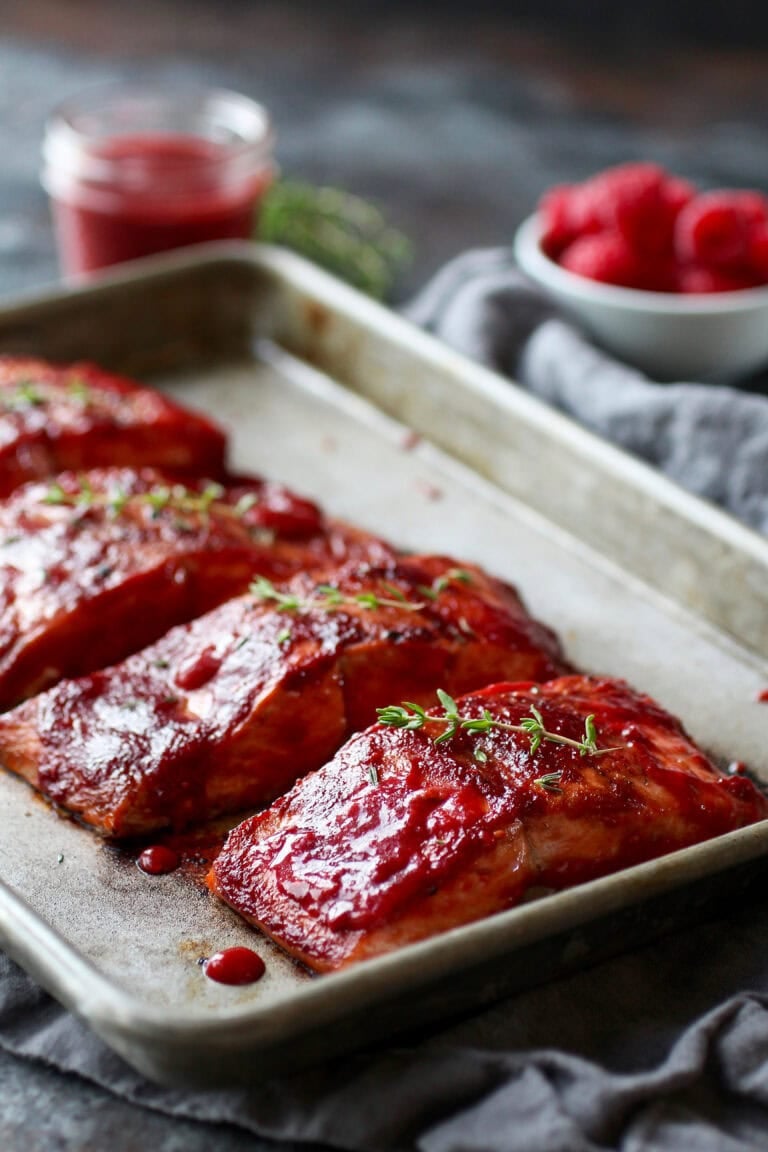
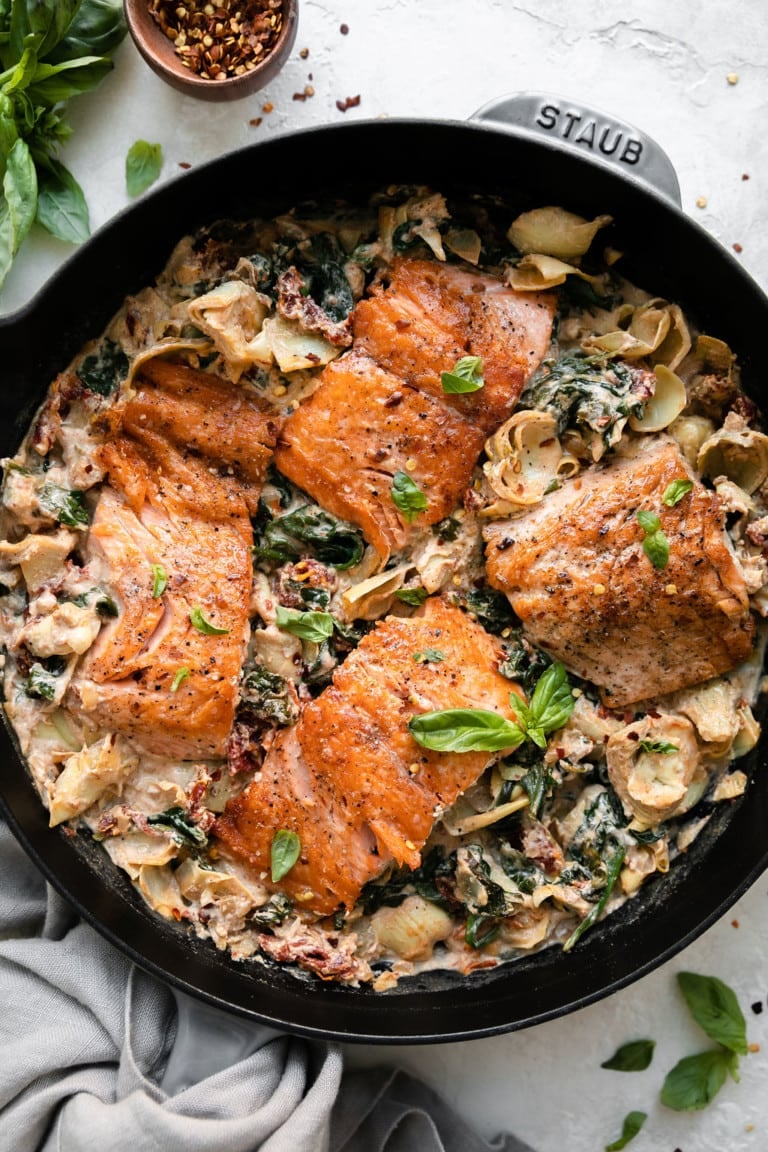
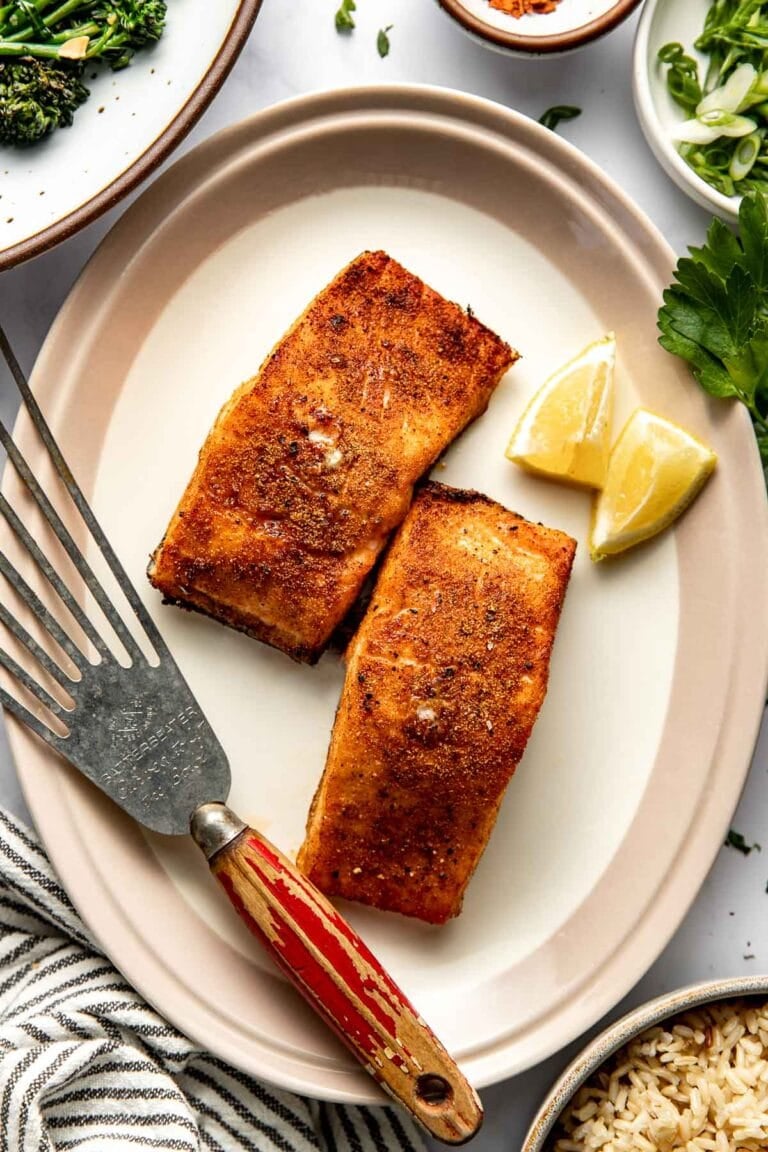
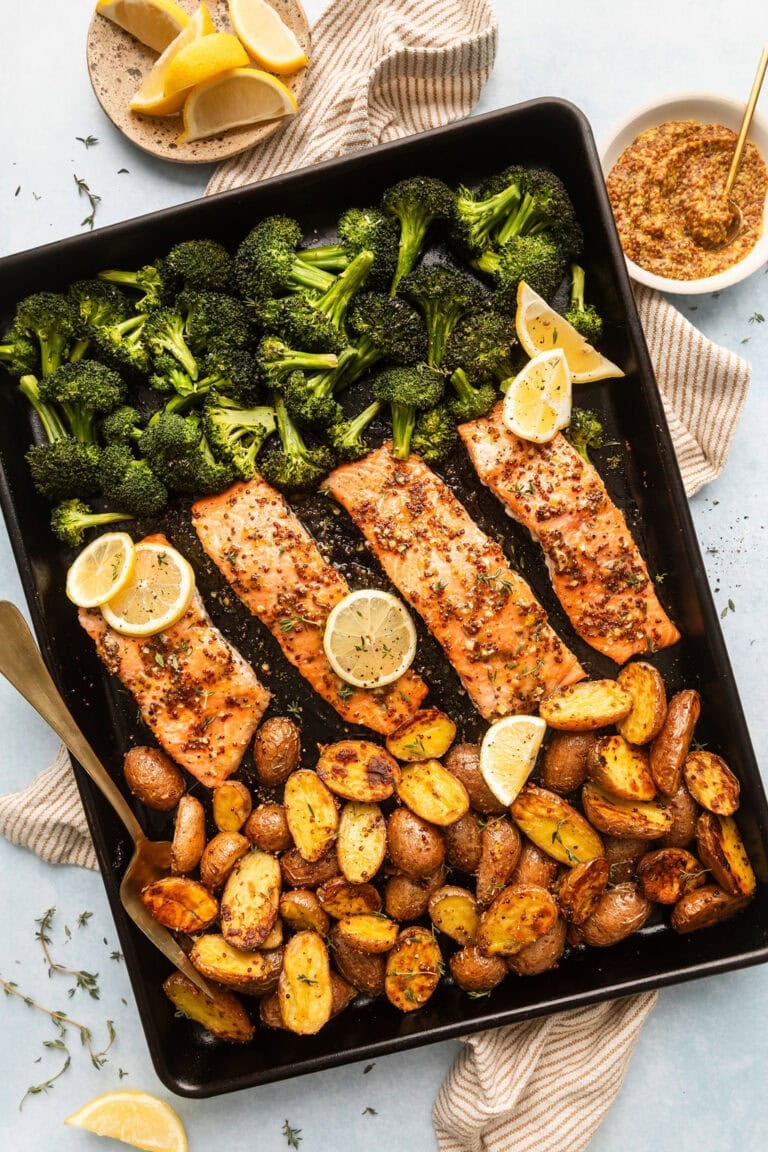
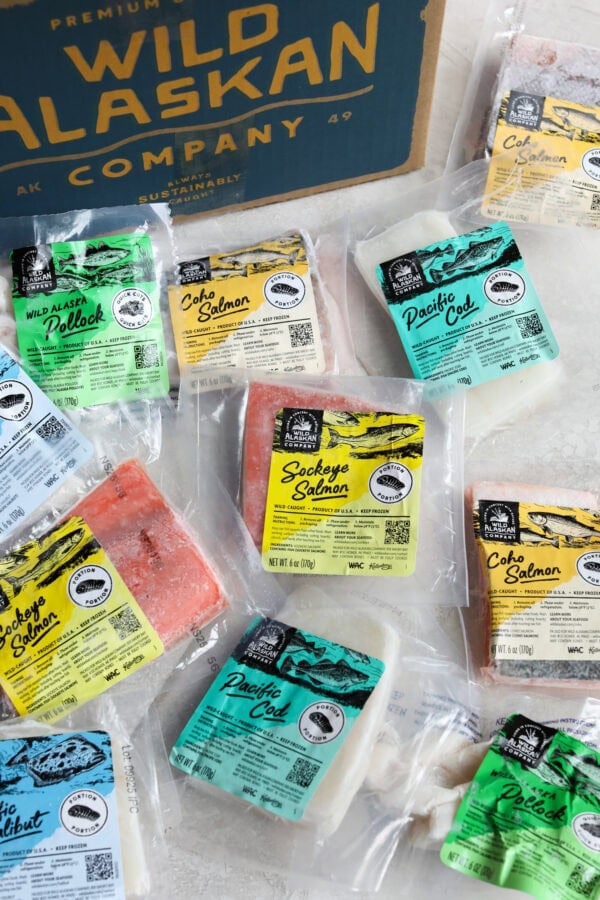
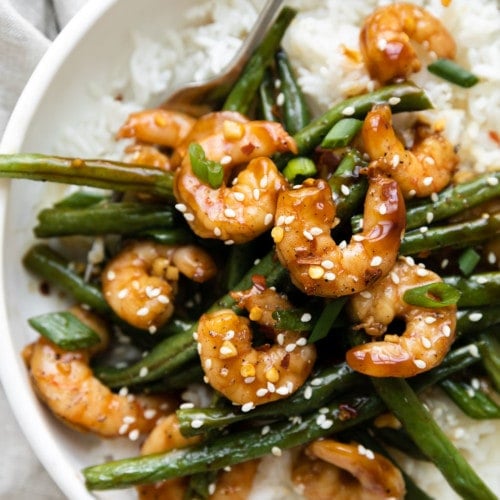

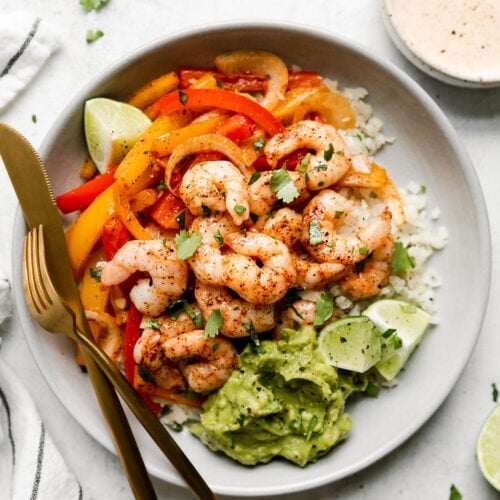
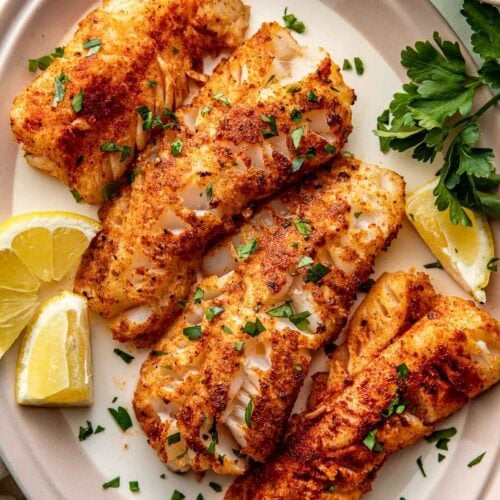
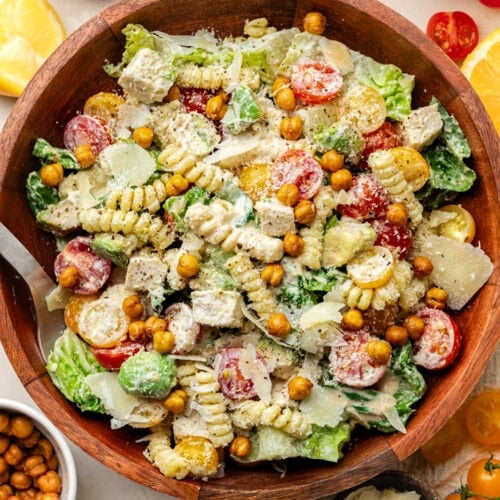
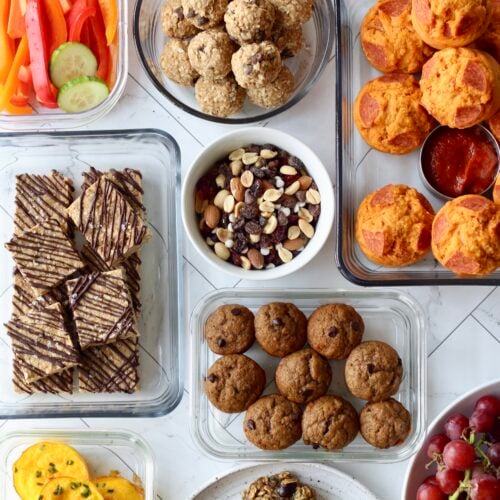
Oh, my gosh! Looking at all these gorgeous pics and salmon recipes makes me feel like I have died and gone to Heaven!
I MUST exclusively eat Gluten Free. So, salmon and veggies are truly one of my FAVORITE go-to “COMBOS”! I absolutely love finding new ideas and options.
Thank you from the bottom of my Heart❤️ and Soul👼!
We hope you can try them all soon, Sharon!